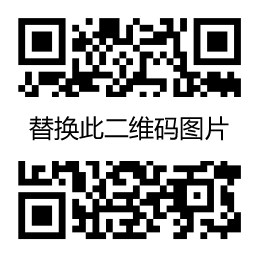Teaching plan for SB1A Unit 9 Technology
Teaching goals: Talk about science and technology
Describe things and how they work
Express agreement and disagreement
Use the present Continuous Passive Voice
Talk about the advantages and disadvantages of modern technology
Write a letter to Q12 about love and friendship
Time arrangement:
Period 1 Warming up, listening, speaking
Period 2 Pre-reading, reading, post-reading
Period 3 Intensive reading
Period 4 Language study
Period 5 Integrating skills
Period 6 Workbook (Talking and Reading)
Period 7 Test
Period one ( listening and speaking )
Warming up
Step I Brainstorming about Technology
1. Is technology important to us? What will you think of when talking about technology?
2. What qualities shall we have if we want to have advanced technology?
( to be creative , good at solving problems and thinking in new ways )
Step II Activity
( Bring the items of a toothpick, plastic bag and left-handed glove if possible)
(Hold a competition of creativity among groups of students if necessary)
1. Students work in groups to solve the problems
2. Compare different solutions and talk about creativity.
Listening
Step I Introduction
1. Describe an everyday object for Ss to guess. (color/ size/ shape/ use etc.)
Step II listening
1. First-listening: what is being described?
2. Second-listening: what can the things be used for?
3. Discussion in pairs: what are the new uses for the objects in addition to the “normal” uses?
Step III A riddle-guessing competition
1. Read the instruction and the guided questions
2 Do a demonstration with a student.
Teacher: You seem to have something in your pocket. What does it look like?
Student: It looks like … ….
T: What is it made of ?
S: It’s made of …….
T: What is it used for ?
S: … … …
3 Ss practice in pairs
4 Competition--- Who can guess it ?
One student thinks of or hides an object in his pocket, while the rest raise questions to guess what it is.
Speaking
Step I Brainstorming
1. Present the situation
2. Brainstorming about the advantages and disadvantages about cellphones
Step II Expressions of agreement and disagreement
Teach new expressions
1) Absolutely= Definitely= Exactly
2) It depends.
3) That’s a good point.
4) That’s worth thinking about.
Step III Activity
1. Ss works in groups and prepare a role play.
2. Ss present their dialogues.
3. Debate: Players from different groups debate the advantages and disadvantages of a cellphone.
Homework: 1. Listening : Workbook P133 Listening Ex 1&2
2. Speaking: Interview your parents the way of life 30 years ago ( Were there telephones , TVs or computers ? )
3. Thinking : P60 Ex 3 Design your cellphone--- to be creative!
Period Two ( extensive reading )
Revision
Check the listening homework on page 133.
Pre-reading
Step I Discussion (Question 2 of Pre-reading )
1. Check the speaking homework of interview
How did people live 30 years ago?
What did people do at night without electricity?
How have inventions and new technology changed our way of life?
2. Talk about the title---Life on the go
Life on the go refers to a fast-paced lifestyle where people are always on the go---rushing from one place to another, doing many things at once, and using cellphones, computers, etc.
Reading
Step I Presentation
1. Talk about the cellphone and present the new vocabulary.
( Ask Ss to bring cellphones of different brands to class if possible)
Questions: What functions does a cellphone have?
What features does your cellphone have? etc.
Vocabulary: function, feature, image, an electronic calendar, remind ,appointment
2. The top question:
Why are cellphones so popular with teenagers according to the passage?
Step II Reading
1. Skimming for the top question.
2. Some T or F statements to check the general understanding of the passage.
3. Scanning for the main idea of each paragraph, comparing general statement and specific statement. ( Post―reading Ex 2 on Page 60 )
Step III Activity
1. Discussion in pairs ( Post―reading Ex 1 on Page 60 ).
2. Design your own cellphone in groups.
Homework: 1. Read the text after the tape, marking the difficulties.
2. Reading comprehension: WB page 136.
Period Three ( intensive reading )
Revision
Revise the text .
Language points
Vocabulary
1. depend v. dependent adj. independent adj.
1) That depends. = It depends. = I’m not completely sure.
2) depend on 依赖,信任,取决于
e.g. His family depends on him.
We’re depending on you to finish the job by Friday.
Happiness often depends on your attitude to life.
2. add v.
1) 增加, 相加, 补充说
e.g. Add a few more names to the list.
If you add 5 and 3 you get 8.
I should like to add that we are pleased with the result.
2) add to = to increase something
e.g. The rise in electricity costs has added to our difficulties.
3) add up to = amount to
e.g. These numbers add up to 100.
声明:有的资源均来自网络转载,版权归原作者所有,如有侵犯到您的权益 请联系邮箱:yuname@163.com 我们将配合处理!
原文地址:新教材高一英语UNIT9教案-教学教案发布于2021-10-22

